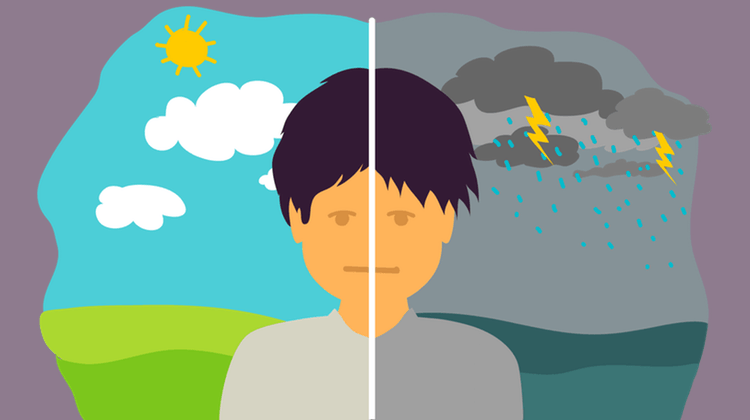The Surprising Truth Behind Employees Fear of Using PTO

People are increasingly paying more attention to how their jobs affect their health. They want a healthier work-life balance that includes more paid time off (PTO) and are willing to change jobs to get paid sick days and more vacation time.
As a result, companies have been re-evaluating their PTO and vacation policies. While some are offering more, roughly half of the workers in America don’t use all of their time off. And this has been happening long before the pandemic hit.
Not taking time off of work is a problem. It can lead to a toxic workplace where you are burnt-out, stressed, anxious, irritable, and unhappy.
You’ve worked hard to earn your PTO, and it’s time you start using it! It’s good for you, your health, and your career.
What is Paid Time Off (PTO)?
Paid time off refers to planned time away from your job where you still receive pay. Your employee handbook or contract will outline how many hours you have and how this time is earned or accrued. That may depend on how long you have been with a company, your position, and so on.
It used to be typical for companies to offer both paid time off and vacation separately, but some have switched to a flexible setup that includes everything in one. Others are exploring unlimited PTO, where whatever you feel the need to take time off for is at your discretion.
Because no law requires it, minimum wage, part-time, freelance, and contract jobs might not have any paid time off benefits.
Examples of Paid Time Off
Each company’s offers may vary, but several situations warrant you getting paid for taking time off work. That may include:
- Federal Holidays
- Vacation
- Sick Time
- Medical Leave
- Jury Duty
- Bereavement
- Parental Leave
- Military Duty
- Voting Time
- A Sabbatical
- Professional Development
- Compassionate Care Leave
- Discretionary Days
- Personal Leave
What is Vacation Time?
Your vacation time is the number of PTO hours or days you can take off from your regular work schedule. Companies usually try to offer paid and unpaid vacation time to their employees.
Two weeks (10 days) of paid vacation time per year is the typical standard in the United States and Canada. This amount usually increases the longer you stay with a company.
What is the Difference Between PTO and Vacation Time?
PTO and vacation time are often used interchangeably but are two different types of time off that your employer can offer. What you receive depends on the structure of the company. They may have an all-inclusive PTO policy where you get a bank of hours to use as needed, or they may allocate a set number of hours to use specifically for things like vacation, sick leave, or personal days.
What About Unlimited Paid Time Off?
Unlimited PTO is another benefit that some employers have started to offer. This trust-based structure allows people to take time off when they need it. However, there is no cap on the number of days an employee can take. Your employer relies on you to be honest about the time you need off without abusing the system.
After a few years of service, some companies offer this to employees while others offer it to everyone.
Unlimited paid time off is a huge selling point when a company wants to hire new talent, but it’s not always as great as it seems. You’ll still be required to complete your work and need the approval to take time off. If your manager or the overall company culture doesn’t encourage taking PTO, they could deny your request, and you may end up with fewer paid days off.
Americans Aren’t Taking Their PTO
Although one study found the pandemic prevented 92% of Americans from taking vacations, eligible employees weren’t using their PTO long before the pandemic hit.
A 2018 study by the U.S. Travel Association, Oxford Economics, and Ipsos found: “55% of Americans reported having unused vacation days—up from 52% the year prior.”
Those statistics align with other similar studies. According to surveys conducted by Glassdoor, in 2014 they found that only 51% of Americans used their vacation time, and only 54% did in 2016.
Why Aren’t People Using Their PTO?
There are many reasons why people don’t take their paid time off work.
Some are hesitant to take time off because their managers don’t support it. They are afraid of what it might do to their reputation and chances of getting a promotion.
Others fear resentment or retribution from their coworkers. They feel guilty if someone is left to cover their workload and feel pressured not to miss work. If no one can cover for them, they don’t want to return to piles of unfinished work and unanswered emails.
There are also “work martyrs” and workaholics who are so invested in their careers that they don’t have a sense of purpose or feel valuable if they aren’t working.
Regardless of the restrictions caused by the pandemic, many people don’t use their vacation days because they can’t afford to travel. Instead of taking the time off they deserve, they keep working and let those paid vacation days go to waste.
Unless they can bank or rollover that time or get it paid out, anyone who doesn’t use their paid time off is essentially working for free.
Why You Need Time Off
Time away from your job is good for you. It benefits your career, personal life, and overall mental and physical health.
Humans are not designed always to be working. You need downtime to balance out your activity and recharge. Without time off, you become physically and emotionally drained. Your work performance declines, and so does your job satisfaction.
Many unwelcomed physical side effects can also come from not taking a break from work. That can include aches and pains, insomnia, weight gain, heart disease, high blood pressure, diabetes, weakened immunity, alcohol and substance abuse, and a decreased overall life expectancy.
When you feel burned out from work, you bring this stress and negativity home. It’s easy to get stuck in a detrimental cycle where you never really unplug and enjoy your life.
Taking time off reduces stress and increases productivity and creativity, which can improve your chances of getting a raise or bonus, according to a 2016 study by Project: Time Off.
No rule says you can only use your vacation days to travel! Go camping. Spend the day at the beach. Or use this time to catch up on personal projects, spend time with your friends and family, or do whatever else you keep putting off doing because you “don’t have the time.” You have the time and will be paid for it, so why not use it?
What Happens to My Unused Paid Time Off?
You will have to inquire with your employer’s human resource department to determine what will happen to any unused PTO you have accumulated.
Some companies will allow you to carry over all of your time, while others will limit this to a certain number of days per year. You would forfeit anything else. Some companies have a “use it or lose it” policy where you can’t cash out or roll over any of your unused time (which is illegal in Canada).
Other companies will pay out any leftover PTO, but this is more common when you leave the company upon termination.
Employers Need to Encourage PTO
Employers can also reap the benefits of giving their staff paid time off.
When it comes to hiring, job seekers want to work somewhere to grow their skills and achieve their professional and personal goals. An appealing PTO policy will attract qualified candidates and reduce turnover because employees have the time to pursue their interests outside of work.
Providing as much PTO as possible improves the overall work environment in many ways, including:
- Eliminating burnout
- Improving office morale
- Creating a work environment based on trust
- Giving more family and personal time to employees
- Reducing mistakes and errors
- Helping managers plan projects and assignments ahead of time
- Reducing the need to find last-minute coverage
- Allowing employees to stay home when they are sick
Happy, rested employees are much more productive and pleasant to be around. That can help build stronger business relationships, leading to more customers or clients and increasing the business’s bottom line.
On a similar note, according to studies done by the Journal of the American Medical Association in 2003, employee pain costs employers an estimated $61.2 billion per year, while presenteeism (where employees show up to work but don’t accomplish much) costs them more than $150 billion per year.
This loss in productivity is approximately three times greater than that caused by absenteeism. In other words, it costs companies less for their staff to stay home than it does for them to show up sick or unwell.
If that doesn’t encourage businesses to start offering more paid time off, what will?





